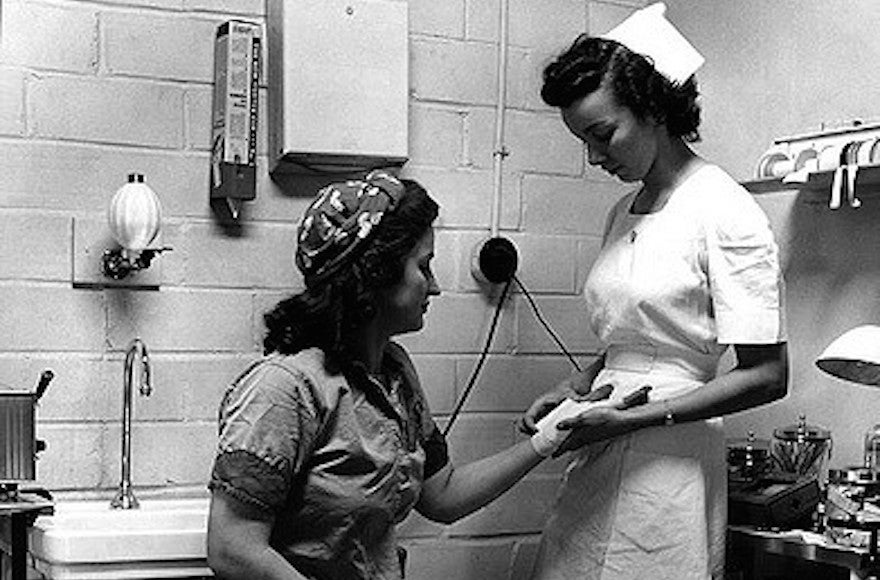When Jews speak the Irish brogue, they are actors. But when Irish girls not only speak Yiddish, but read and write the language, that is news.
This feat has been accomplished, and so effectively as to make the achievement stand out as a miracle in language study. The heroines in our story are a group of eleven nurses, who are on the staff of the North End Clinic in Detroit, all but two of whom are of Irish, Scotch, Italian, and Finnish extraction. The two exceptions are Jewish girls who, with their Gentile sisters, had to start with the Aleph Beth to learn the rudiments of the Yiddish tongue.
It all began this way : For some time Miss Helen Shaw, dietician of the North End Clinic, who is a Canadian non-Jewess, began to feel the need for a knowledge of the language of the group which made up the bulk of visitors to the clinic. Other nurses similarly felt that a knowledge of Yiddish would be of great help to them in understanding their patients. Miss Shaw, accordingly, proposed to Mrs. Eleanor Jones Ford, director of the clinic, that a class in Yiddish be formed as a direct aid to the nurses, and indirectly thus to increase the efficiency of the clinic.
Dr. John Slawson, executive director of the Jewish Welfare Federation of Detroit, of which the North End Clinic is a participating agency, was very sympathetic to the plan which was finally approved by the Federation board. Through Bernard Isaacs, superintendent of the United Hebrew Schools of Detroit, Abraham Lachover, of the staff of the local schools, was assigned to what appeared as an impossible task, and in the five months that he has directed the Yiddish class, since the middle of October, 1929, he has made a difficult task easy.
Meeting twice a week, from 2 to 3 on Mondays and Thursdays, the class, which is conducted in the direct Yiddish method, is now able to read elementary Yiddish and to converse with its teacher. Not only that, but each of the nurses is able to write the Yiddish script with ease. One of the two Jewish nurses in the class, when she first started the course, knew not a word of Yiddish. Now she is capitalizing on family affection by writing all her letters home in Yiddish. She comes from a small town in the northwest whose Jewish population numbers two families.
Mr. Lachover is enthusiastic about his class.
“With the handicaps we encountered we have nevertheless succeeded in surmounting great obstacles,” Mr. Lachover said. “It must be remembered that in my class are enrolled intelligent Christian young women. All of them have had a college education, and some are preparing themselves for the doctorate in medicine. The fact that these students were so eager to study from a children’s textbook speaks very highly for the sincerity of the group. But whenever it is possible we try to apply the Yiddish language to the immediate health problems of the students. We have, to quote an instance, translated the various terms for the healing of scabies into Yiddish, and the girls were thus able to make practical use of their studies. We call the disease in Yiddish ‘die beisende krankheit.’
“The study of Yiddish, and the fact that the students are in constant contact with Yiddish speaking people, has aroused in them a desire to know the customs and holidays of the Jews, and when holidays come around we make a study of them. Purim, Passover, and Chanukah have been subjects of discussion by the group—and all in Yiddish.”
The primer “Yiddish far Onfanger” (“Yiddish for Beginners”) by B. Ostrowsky and S. Hurwitz (Zalkes) is used by the class, in addition to the special lessons. The “goyishe” students, as they refer to themselves, not only take pride in their class studies, but also utilize their spare time for the
JTA has documented Jewish history in real-time for over a century. Keep our journalism strong by joining us in supporting independent, award-winning reporting.
The Archive of the Jewish Telegraphic Agency includes articles published from 1923 to 2008. Archive stories reflect the journalistic standards and practices of the time they were published.




